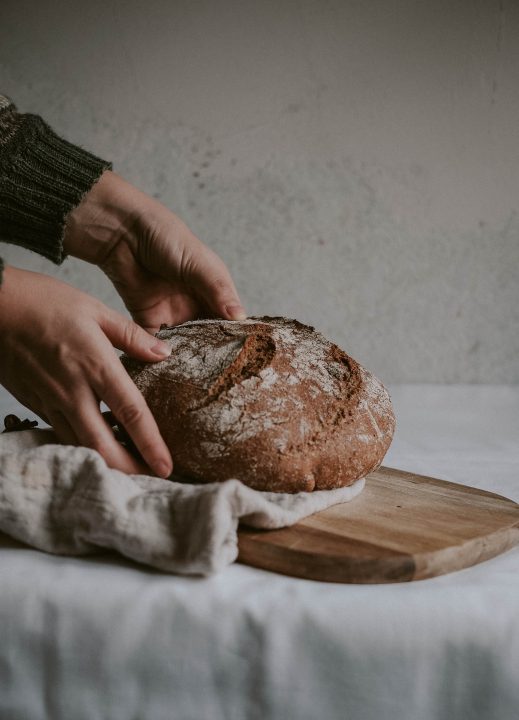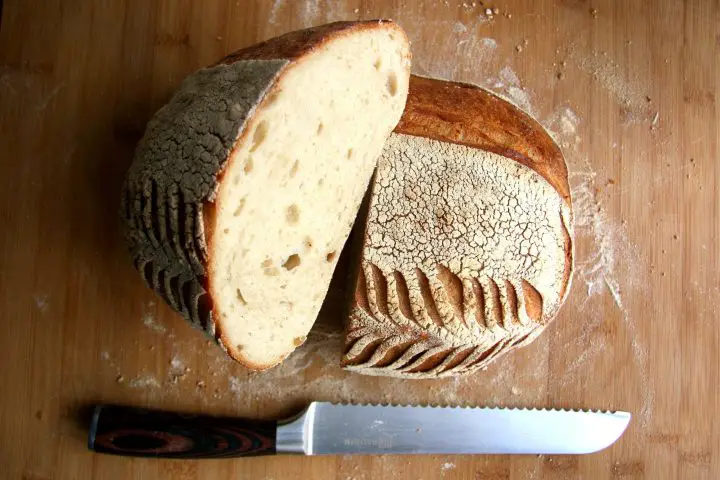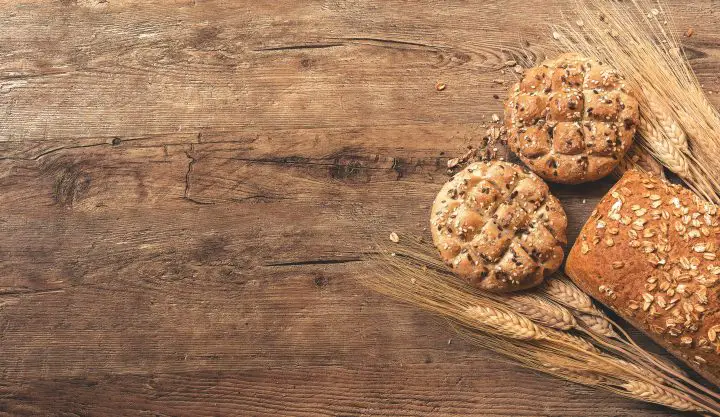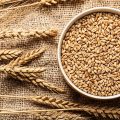Sourdough bread is a type of loaf that is famous for its distinct flavor. Additionally, it is also known for being a bread dough that is notoriously elaborate to make. This being because it requires a distinct sourdough starter. Now, with how much people discuss it, you may be curious to eat sourdough bread. Of course, everyone loves freshly baked bread but due to being so distinct, you’ll want to know what does sourdough bread taste like?

Table of Contents
- What Is Sourdough Bread?
- What Does Sourdough Bread Taste Like?
- Ways To Alter The Taste Of Sourdough Bread
- Answered: What Does Sourdough Bread Taste Like?
- FAQ – What Does Sourdough Bread Taste Like?
What Is Sourdough Bread?
Sourdough bread is a type of bread that is made using sourdough starters. These are something of a symbiotic relationship between lactic acid bacteria and wild yeast. The result of which being that when hydrated with water and mixed with flour and allowed to ferment, the yeast and bacteria will be able to feed.
As such, the ingredients of sourdough bread recipes will include the sourdough starter, salt and flour. Now, you may find this unusual as you are not adding any additional commercial yeast to the baking process. The reason for this is that the primary form of leavening with sourdough comes from the gas produced by the fermentation of flour and water.
The result is that following a sourdough bread recipe will be as much of a chemistry experiment as it is a baking project.
One popular variation is artisan sourdough bread which is a variation that is more airy and open.
Why Would You Bake Bread In This Manner?
Sourdough is one of the oldest types of breadmaking techniques there is. In fact, it was likely not always known as sourdough as the technique for making this type of bread predates more modern conventional options.
The reason for this is that commercial yeast and mass production techniques only came to prominence in the nineteenth century. As such, bread making methods using added yeast are more of a modern phenomenon.
With this in mind then, many people who make homemade bread may want to try a more traditional recipe. As such, they’re more likely to opt for using an active sourdough starter to do so. However, they may also simply enjoy the taste that this distinctive type of loaf brings.
What Does Sourdough Bread Taste Like?
As the name suggests sourdough breads are a type of bread that is known for their particularly sour flavor. More specifically though, you will notice that sourdough bread tastes similar to regular yeasted bread. However, this will also be given an additional slightly tangy taste that comes from the acids in the sourdough starter.
How potent this sour taste is though will often mainly depend on how long the sourdough is allowed to ferment. When fermented for a short period the sour loaf will have a subtly sweet tang to it. Meanwhile, a sourdough that is allowed to ferment for a long time will make for a more distinctly sour bread loaf.

Ways To Alter The Taste Of Sourdough Bread
When it comes to making sourdough bread there are a variety of options to vary the sourdough taste. Now of course you may want to make the bread sour or not. However, there is an assortment of possible options for how to make these tastes more varied.
Some of the best options for doing so though will include the following techniques:
- Using Wholegrain Flour
- Don’t Enrich The Dough
- Add Rye Flour To The Sourdough
- How Frequently The Sourdough Starter Is Fed
- Retaining The Hooch
- Incorporating Extra Oxygen
- The Age Of The Sourdough Starter
- Fermenting At A Cooler Temperature
- Feeding Sourdough At Its Peak
- Temperature Of The Water
- Quantity Of Starter Used
- Whether To Use Baking Soda Or Not
- Degassing The Sourdough
- Prolong The Final Bread Rise
- Stiffness Of The Sourdough Starter
- Incorporating A Preferment
- Baking The Dough In A Favorable Environment
Using Wholegrain Flour
In order to emphasize the sourness of the sourdough flavor, an excellent way to do so is to use wholegrain flour. This is not to be confused with unbleached bread flour. Instead, wholegrain flour is grounded up wheat that is kept intact rather than being stripped in any way.
Without even changing any other aspect of the sourdough recipe adding wholegrain to a sour starter will greatly enhance the sour flavor. The reason for this being that whole grains will contain complex carbohydrates. This being due to the fact that wholegrain flour will encourage the production of more acetic acid than regular ones.
One thing that you should bear in mid though is that using wholewheat will change the density of the loaf. This being that the resulting more sour loaf will be more dense. As such, you need to strike a correct balance between tanginess and denseness.
Don’t Enrich The Dough
Enriching the the dough is the process of adding other ingredients such as butter, milk and oil. The result of which being that they will soften the texture of the bread by bringing some extra fats to the loaf. As a result, the taste of the bread will become much more mild than it otherwise would be.
With this in mind then, when you are are making sourdough, keep it simple to ensure it retains a distinct sour taste. To do, incorporating only flour, water and salt will produce the best results.
Add Rye Flour To The Sourdough
Rye flour is not commonly used in mainstream commercial baking. The reason for this being that it gives the dough a slightly gluey texture which is not up to everyone’s tastes.
However, the unique enzymes and complex carbohydrates will produce a unique set of sugars. These sugars will then in turn create a higher ratio of acetic acids which will therefore increase the sour flavors.
Additionally, they will also provide superior rising quality along with being rich in nutrients and easily digestible. As such many artisanal bakers will use rye flour exclusively.

How Frequently The Sourdough Starter Is Fed
How often that you end up feeding your sourdough starter will dramatically alter the taste of the bread. The more that it is fed the more mild that the flavor will be as allows more hooch and ascetic acids to be produced.
As such, a less frequent routine of feeding your sourdough will of course produce more sour flavour. However, if you keep it too scarce then then you may starve it too much and therefore not end up with a loaf. As such, feeding it every two days will keep it active whilst also producing a great sour taste.
Retaining The Hooch
Hooch is the brown liquid that is developed when the starter has ran out food. As such, many bakers will often remove the hooch when fermenting the starter. However, this liquid is full of an assortment of sour flavors. As such, to increase theses tastes, when making sourdough it is advised to mix the hooch back into the starter.
Incorporating Extra Oxygen
As you can probably gather, acetic acids are often the golden ticket to sour/tangy flavors. With that in mind then these acids should be fostered and a great way to do so is to incorporate more oxygen into the starter. An easy way to do so though is to vigorously mix the starter when you feed it in order to bring add oxygen.
The Age Of The Sourdough Starter
Inherently, the older a sourdough starter is, the more sour the resulting bread will be. The reason for this being that the more time it has had to ferment, the more it will acetic acids will have developed. Therefore, the bread will have a much more strong taste.
As such, sourdough starters will often be preserved over long periods of time by frequent bakers. The reason for this being that the sourdough starters will gradually produce better quality loaves.
Fermenting At A Cooler Temperature
One of the easiest ways for you to bring in some extra sourness to your bread is to change the temperature. In particular, to ensure that it is allowed to ferment at a cooler temperature.
The reason for this is that when fermented at a slower temperature the process will slow down. As such, the flavor will become more sour since the cold will prolong the process. With this in mind then, you should either fully or partially ferment your sourdough starter in the fridge.
Feeding Sourdough At Its Peak
As mentioned before, how and when you feed your sourdough starter will greatly impact the flavour. With that in mind then, when you are feeding your starter, you should do so roughly seven hours after peak reactivity. The reason for this being that it will allow more of the acetic acid to be produced.
However, if you are looking for a more mild option, then you should feed the starter more quickly. As such, waiting for only a couple of hours after the peak is best.
Temperature Of The Water
As mentioned above, the temperatures involved with the sourdough starter components make for a big difference in flavor. With this is mind then the temperature of the water can also have a massive impact on flavor.
In particular though, when you use warm water it will activate the yeasts and bacteria more vigorously. As such, the bread will develop a more sour flavor. The best temperature option though will be approximately 80° F (27° C). Any hotter that is too hot to touch though is likely to kill off your starter.
Quantity Of Starter Used
When it comes to food though, ratios of ingredients are of course an important factor. As such, the amount of starter to use can also play a big factor in how the final loaf will taste.
The reason for this being that the less sourdough starter that you use, the more sour flavor will finally be. This being because the less starter that was the longer it will take to go through it’s food source. As such, more acetic acid will be produced, leading to more of a sour flavor.
Whether To Use Baking Soda Or Not
Baking soda is a commonly used tool ingredient incorporated into bread loaves that is used as a leavener. Often this will be added to the dough before being formed into a shaped loaf and baked.
As such, you may be assuming that you will be needing to add baking soda to the sourdough loaf. However, you may not wish to do so as the alkaline nature of baking soda will neutralise the acidity created by the starter.
That said though, if you wish to make a more mild sourdough bread then some baking soda may be a great option. In fact, this is often a trick used by bakers to make a more mild taste when using rye flour.
Degassing The Sourdough
Degassing is a technique that is done by moving around and stretching the dough. The result of which is that gases are released from the dough and the resulting bread is more sour. This being due the bacteria having access to new pockets of sugar to feed on.
The reason for this though is twofold. These being that the levels of sugar present is reduced. Meanwhile, the lack of gases will allow the starter within more time to ferment.
Prolong The Final Bread Rise
During the final rise, this is another time that perfectly ideal for prolonging the fermentation process. This being a technique that is of course perfect for increasing the sourness by a significant manner.
As such, when during the final rise, doing so in the fridge is the perfect way to do so. This is because like with the earlier mentioned starter fermentation process refrigeration will help to prolong the process.
Stiffness Of The Sourdough Starter
Using a more stiff sourdough starter is another way to accentuate the sour flavor of the bread. This may not necessarily be that simple to do since it will require you use a more dry starter.
The reason that this makes for a more sour option though is that a more moist, more lactic acid will be produced. As a result, the bread made with it will be like more of a mild yoghurt.
One thing that you need to consider though is that changing the ratio of water will change the amount added later. This being because the less water used in the starter, the more that needs to be used in the recipe later.
Incorporating A Preferment
Another great option to enhance the the fermentation process is to incorporate a preferment into your recipe. This being the process of allowing some of the flour to ferment before incorporating it into the rest of the ingredients.
With sourdough, feeding a smaller amount of your starter into a larger amount of flour is an excellent way to do so. Then, it should allowed to sit for a few hours. Following which, the preferment can then be added to the rest of the ingredients where it will act as the sourdough starter.
Now, of course using a preferment when making sourdough bread will help to bring in some sour flavor due to increasing the acidity. However, this will also help to improve the raising power of the loaf in question.
Baking The Dough In A Favourable Environment
Now, perhaps the most extreme technique for improving the flavour of your sourdough bread is to change your location. The reason for this being that the region in which you live will make a dramatic difference to the final flavour of your bread.
Different regions will have their own distinct wild bacteria and yeasts. As such, they will provide a unique assortment of flavors, tastes and aromas. An example of such being to the iconic San Francisco sourdough bread. This means that unfortunately, you’ll need to be in San Francisco to make that type of sourbread authentically.
Now, this may be a disappointment, especially if you want to replicate the sourdough of a particular region. However, this will ultimately not be too much of a big deal as you can make delicious sourbread wherever you are. Especially so if you decide to incorporate some of the techniques mentioned above.
Answered: What Does Sourdough Bread Taste Like?
Sourdough bread is a type of bread loaf that is known for it’s deliciously tangy flavour. This being especially true when you compare the flavours associated with sourdough bread with those that use commercial yeast instead.
That said though, whilst sourdough bread is known for the sour taste there is some variety. What this means is that some options will be slightly tangy whilst others are much more distinctly sour.
Now, this type of bread isn’t necessarily the thing for everyone. However, it is also one that is often seen as a great challenge for both professional and homebakers. Many of whom will often decide to foster their own sourdough starter in order to make a loaf that is uniquely delicious.
With that in mind then, many bakers will bring in some different techniques in order to either enhance or diminish the tangy flavor. Meanwhile there are also an assortment of other techniques you can use in order to further alter the flavor of the loaf.
Some sourdough can be sweet, too, if other ingredients are added. Such examples are Sourdough Hot Cross Buns and Sourdough Babka.
As such, if you’re wanting to try some sourdough bread there are a wide array of options you can try. Each of these being that more distinct based on how much the tanginess is diminished or accentuated.
With that in mind then, if you find that you’re not too into one form of sourdough bread, then you shouldn’t count it out entirely. This is because the sheer diversity found within different sourdough options will inevitably mean you like at least one option.
FAQ – What Does Sourdough Bread Taste Like?
Does sourdough bread taste different to ordinary bread?
Sourdough bread is a type of loaf that will use a sourdough starter instead of the typical commercial yeast. As such, the fermentation of the starter along with the lack of yeast and baking soda will bring in some extra sour or tangy flavours. Now of course these will vary in intensity with some being strongly sour and others only really having a light tang.
Is sourdough bread supposed to taste sour?
Sourdough bread is a type of loaf that will use a sourdough starter instead of commercial yeast to rise. As such, it will use the gases of fermentation for the leavening process. Meanwhile this process will also bring in some acetic acid and by proxy a more sour taste. Naturally, the flavour of different sourdough loaf recipes will vary greatly. On the more mild end of the spectrum, there are some sourdough loafs which have a light tangy taste to them. Meanwhile on the other end of the spectrum some sourdough loaves will be incredibly sour tasting. Of course though, there will be some in the middle of this spectrum and many will also incorporate some additional flavours.
Does sourdough bread taste nice?
Sourdough bread is a type of loaf that is known for it’s distinctly sour flavour. The reason being that sourdough bread will use a sourdough starter instead of commercial yeast to rise. As a result, it will employ the gases created in fermentation for the leavening process. Meanwhile, this process will also bring in some acetic acid and by proxy a more sour taste. Naturally, this will be something of a subjective thing since some people will prefer a more sour taste it provides. Meanwhile some people will not find it all that pleasant. That said though, the level of sourness can greatly vary. As such, whilst you may not like a strongly sour one, you may enjoy one that is only mildly tangy in flavour.
Does sourdough bread taste bad?
Sourdough bread a variety of bread loaf that is often associated with it’s uniquely sour taste. The cause of this is that sourdough bread uses a sourdough starter as opposed to commercial yeast in order to rise. The result of this is that it will use the gas created during fermentation as part of the leavening process. At the same time, this fermentation also creates some acetic acid, thereby bringing out a more sour taste in the final loaf. Whether this tastes bad though it a subjective thing as some people will find the more sour taste it provides repusive. Meanwhile some people will not find it delicious. That being said though, this level of sourness can also vary greatly, meaning that whilst you may not like a strongly sour one, you may enjoy one that is only mildly tangy in flavour.
Does sourdough bread taste like white bread?
Sourdough bread is a type of bread that uses a sourdough starter instead of commercial yeast. As such it will not be identical in taste in flavour due to the fermentation from this starter bringing acetic acid and therefore a sour taste. That said though, the level of sourness these loaves can have will greatly vary. As such the spectrum can range from slightly tangy bread to incredibly sour. Additionally, some people’s loaves will also incorporate other flavors into their sourdough loaves which makes them more unique.
Does sourdough bread always taste sour?
Sourdough bread is a bread type that is known for it’s sour flavour profile. This being something that results from the use of a sourdough starter rather then commercial yeast. The result of which being that the starter will create acetic acid which brings in some sour flavour. That said though, some sourdough bread loaves will be incredibly intense in their sour flavour. However, there are some very other types of sourdough bread that will only have slightly tangy flavour. Additionally, like with any other type of bread, there are an assortment of other flavours and textures that can be incorporated into the loaf.


![[Video – Part 2] Entering Into Peasant Bakery 5 [video] from the seed to the peasant bakery with nicolas supiot](https://www.mydailysourdoughbread.com/wp-content/uploads/2022/11/image-16-120x120.jpeg)



